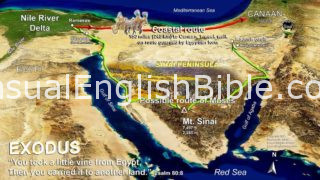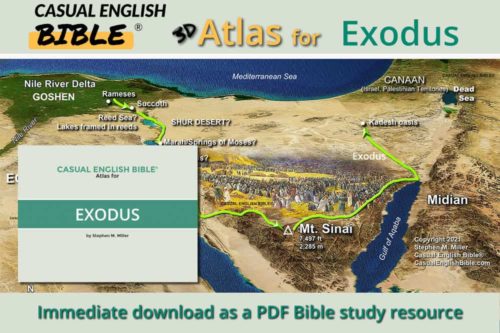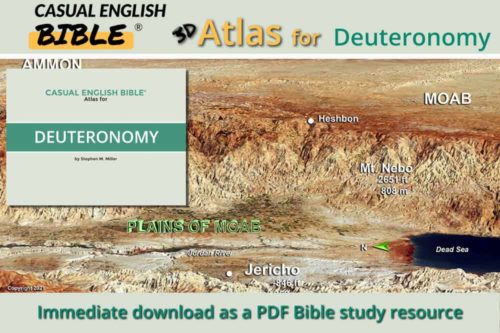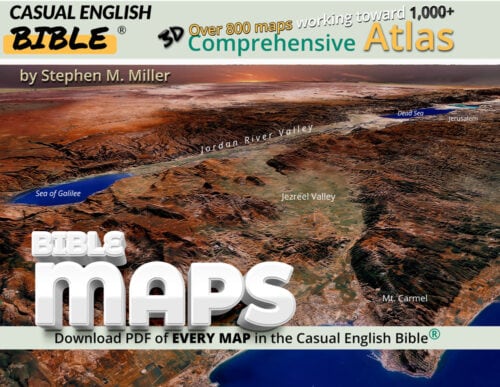By Robert V. Huber
“Let My People Go!”
Plagues of locusts and frogs, with rivers of blood.
Then death to every family’s oldest son.
That’s what it takes to jumpstart the Exodus, and to get the Israelites on the road and out of Egypt, headed to the Promised Land.
Four hundred years have passed since Jacob, also known as Israel, moved his family to Egypt to escape a seven-year drought. He’s dead now. So are his dozen sons, including his favorite son, Joseph, who had become a top Egyptian official and welcomed the family’s migration to the drought-resistant Nile River.
Their descendants, known locally as Hebrews, are now slaves to the Egyptians, who try to wipe them out. But along comes Moses. He murders an Egyptian slavedriver for abusing one of the Hebrews, then has to run for his life. He becomes a shepherd who raises a family along the eastern border of the Sinai Peninsula. Forty years later, God orders him to go back to Egypt and free the enslaved people of Israel, ancestors of today’s Jewish people.
What follows is a great national epoch, which tells how Moses, armed with a shepherd’s staff and 10 juicy plagues, gets his people out of Egypt. He leads them miraculously through the parted waters of a sea, establishes them as a nation on the move in a desert, gives them a set of laws to follow, becomes their first prophet, and has them build a traveling worship center for God, the one who really set them free. Cue the rams’ horns.
Writer
According to ancient Jewish tradition, Moses wrote the first five books of the Bible, including Exodus. However, some Bible scholars question his authorship. To be sure, Moses was on the scene for all the events described in the book, but there are no surviving records of any writing in Hebrew until centuries after Moses’ time. Did he write in Egyptian hieroglyphics? Some scholars say that the stories found in these early biblical books were passed on from generation to generation by word of mouth and were only later written down.
Other scholars say there’s evidence of several writers contributing to Exodus, including priests. They say the evidence shows up in word choices, writing style, and points of view that aren’t always consistent.
Scholars say that at some point in history, these versions of stories written by different people were put together into the book we now know as Exodus.
Timeline
There’s nothing solid in the Book of Exodus that sets a time frame. But many Bible scholars have estimated that the events in Exodus occurred roughly sometime between 1355 and 1275 BC. One supporting clue: “Egyptians forced the Hebrews to build two of Pharaoh’s warehouse cities: Pithom and Rameses” (Exodus 1:11). Rameses II, known as Rameses the Great (ruled about 1279-1213 BC), built extensively throughout Egypt.
Some scholars place the Exodus in the 1400s BC. That’s based on the note in 1 Kings 6:1, which says King Solomon (ruled about 970-931 BC) started building the Jerusalem Temple 480 years after the Exodus. Construction began during the fourth year of his reign, in about 966 BC. A little math: 966 plus 480 equals, 1446 BC.
Location
The first part of Exodus takes place in Egypt, where the Israelites are suffering as slaves. The narrative then moves out of Egypt into the triangular wedge of desert wilderness that abuts the Mediterranean Sea to the east of Egypt and is now known as the Sinai Peninsula.
Purpose of Exodus
To serve as a foundational history for the Jewish people. It’s the story of how they became a nation. All the elements are there to show how the descendants of a family of migrant shepherds became slaves, then were freed by God, whom they learned to worship and obey. This is the story, too, of how God gave them prophets, a place to worship, how-to instructions for worship, along with diverse laws covering religion, crime, and civil matters.





